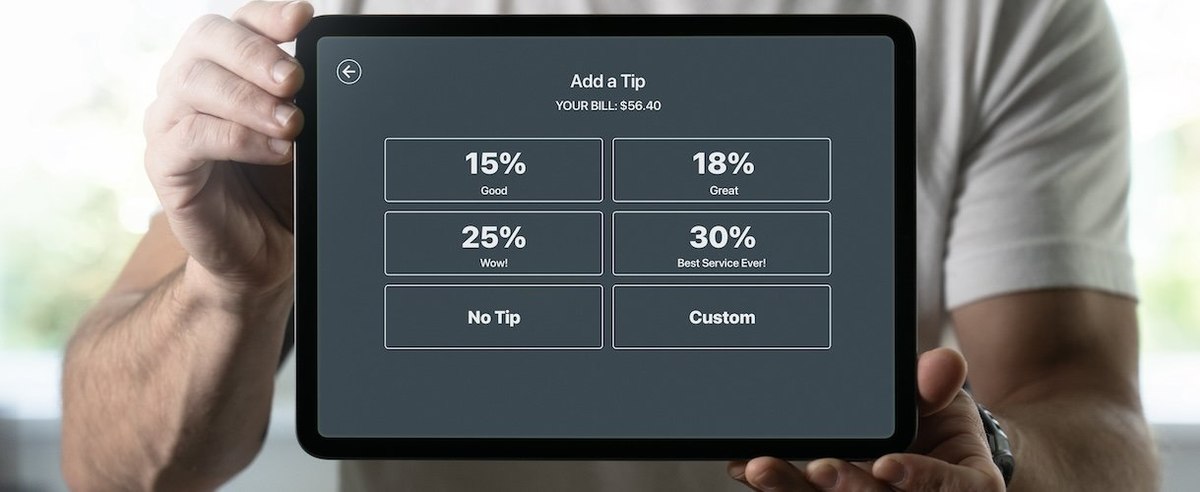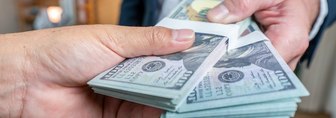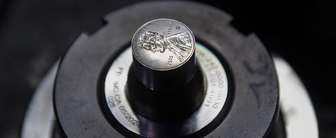Social norms for restaurant dining in the U.S. generally call for a tip of 15% to 20% of the bill. A new YouGov survey asked Americans about their tipping habits at restaurants. While most Americans tip between 15% and 20%, there are plenty who will tip above this threshold for service they consider to be excellent or who will reduce or withhold the tip entirely if they feel the service is poor.
Most Americans (62%) tip between 15% and 20% when they go out to eat at a restaurant with table service and get average service. 27% typically leave a tip of 15% and 35% typically leave a tip of 20%. Few tip 25% (4%) or more than 25% (2%).
One-quarter (25%) of Americans leave a tip of less than 15% when they get average service: 13% leave a 10% tip, 8% leave a 5% tip, and 4% leave nothing.
Adults under 30 are lower tippers than older adults are. Among adults under 30, 21% say they typically leave a tip of 5% (14%) or nothing (7%) for average service. Among older adults, only 12% leave tips of 5% (8%) or nothing (4%).
Adults 65 and older are more likely than younger adults to leave a 20% tip when they have average service (46% vs. 32%).
Among restaurant diners who go out to eat more than once a week, 40% say they leave a tip of 20% for average service and 25% leave a tip of 15%. Among people who go out to restaurants less than a few times a year, only 31% leave a tip of 15% for average service and 18% leave a tip of 20%.
The total amount of the bill and the level of service has an influence on how much Americans are willing to tip.
30% of Americans say they would tip nothing if they received poor service at a restaurant. Around one-third (34%) would tip between 5% and 10%, and 15% would leave a tip of 15%. Few (9%) would tip 20% or higher if they received poor service.
If the bill were $10 and the service were poor, 35% of Americans would not tip at all. Another 38% would tip something, but less than $2 (20%). 19% would tip $2 (20%) or more.
For poor service on a $20 meal, 29% would tip nothing, 48% would tip something but less than $4 (20%), and 15% would tip $4 (20%) or more.
If the service were poor, 26% of Americans would tip nothing. 53% say they would tip something but less than $20 (20%) and 10% would tip $20 (20%) or more.
For average service, 41% of Americans say they generally leave a tip of at least 20%, while 27% typically leave a tip of 15%. One in five (21%) will tip between 5% and 10% for average service.
If the bill came to $10 and the service were average, 65% of Americans would tip at least $2 — which would be 20% of a $10 tab. 18% would leave a tip of more than 25%, or more than $2.50.
For a $20 meal with average service, 57% of Americans would tip at least $4, which is a 20% tip.
Average service deserves at least a $20 tip on a $100 tab, according to 44% of Americans.
If they received excellent service at a restaurant, 71% of Americans say they would tip 20% or more.
Tips go up for a tab of $10; 84% would tip 20% or more on this bill if they received excellent service.
On a $20 bill, 79% of Americans would tip at least 20% for excellent service. 14% would tip between 5% and 15% for excellent service, and hardly any (3%) would tip nothing for excellent service.
Staff who provide excellent service on a $100 bill may find themselves with a higher-than-usual tip. 72% can expect a tip of 20% or higher, including 44% who would get $25 or more.
What constitutes poor service is in the eye of the beholder, but most Americans say they would tip less if they experienced rudeness from staff (79%) or inattentiveness by staff (70%). Around half would reduce their tip if their experience included each of the following: slow service (51%), poor food quality (50%), or food that is too cold (50%). Slightly fewer would reduce their tip for an incorrectly served order (46%), a dirty restaurant (46%), or a lack of enthusiasm from staff (45%).
While adults under 30 tip less than older Americans in the first place, they are also less likely to reduce their tip because of service quality.
82% of adults 30 and older would reduce their tip if the staff were rude, but only 68% of younger adults would do the same. Most people 30 and older (54%) would reduce a tip for slow service, but fewer than half (42%) of younger adults would do so. About half of adults 30 and older (49%) would reduce their tip if they sensed a lack of enthusiasm from staff, compared to only 31% of younger adults.
— Taylor Orth and Carl Bialik contributed to this article
Related:
- Who are you supposed to tip in 2023? Here’s what Americans and Europeans say
- For America’s food service-workers, a tip is not guaranteed
- What is America's standard tip amount? It depends on which generation you ask
See the results for this YouGov poll
Methodology: The YouGov poll was conducted online on May 6 - 8, 2024 among 1,148 U.S. adult citizens. Respondents were selected from YouGov’s opt-in panel using sample matching. A random sample (stratified by gender, age, race, education, geographic region, and voter registration) was selected from the 2019 American Community Survey. The sample was weighted according to gender, age, race, education, 2020 election turnout and presidential vote, baseline party identification, and current voter registration status. Demographic weighting targets come from the 2019 American Community Survey. Baseline party identification is the respondent’s most recent answer given prior to November 1, 2022, and is weighted to the estimated distribution at that time (33% Democratic, 31% Republican). The margin of error for the overall sample in each survey is approximately 4%.
Image: Getty (Sadi Maria)










